Spring 2024 viewing, part three
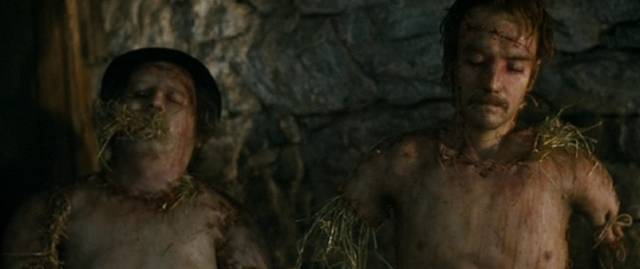
I’ve never been much given to introspection, but every now and then thoughts do pop into my head and even occasionally nag at me no matter how much I might try to ignore them. Perhaps it’s an illusion, but this seems to happen more the older I get. As health issues and the distressing death of close friends impinge on a lifetime of obliviousness, making mortality ever more difficult to ignore, it’s hard to avoid wondering what, for want of a better expression, it’s all been for. I’ve certainly had some interesting experiences over the decades, but sitting here now in my basement apartment in Winnipeg, frustrated that financial limitations keep me stuck in a dead-end job long after I should have been able to retire, it’s clear that I haven’t managed my life very well, trusting too much to chance rather than making an active effort to shape my finite term on the planet.
Where my lifelong passion for movies fits into this isn’t clear. Intermittently, movies and life have intersected – in 1973, my first job in Winnipeg was at a small industrial film production company where I got a brief taste of the business; the most enjoyable part of my years at university was being the movie reviewer for the student paper; there was my three-year connection with David Lynch, which resulted in my first professional writing gig with my account of the production of Eraserhead, which in turn led to my working as a documentarian on the production of Dune in 1983; over the next couple of decades I wrote occasional reviews and articles for various magazines; my own career as an amateur filmmaker began in the late ’80s, leading to fifteen years as a professional editor, culminating in a couple of long-form documentaries which I produced, directed and edited – but all that seems haphazard in retrospect. I can’t really claim filmmaker as an identity. But I’m not sure what other identity I can claim. Certainly, the dreams (fantasies) I once had never took lasting shape.

But through it all, I’ve never stopped watching movies. Perhaps that’s part of the problem – has immersing myself in vicarious experience kept me from fully realizing genuine experiences? When I was younger movies opened doors, revealing aspects of history, psychology, imagination far beyond the scope of real life. But after decades and thousands of movies – and my own inevitable sense that life is winding down – is it now anything more than a habit, a distraction from encroaching dissatisfaction that I haven’t accomplished anything more? But what more could I accomplish at this stage in my life, with limited material resources and an unavoidable awareness of physical decline? Strange to admit at this late date that, while I can still enjoy a sense of immersion when I watch a movie, there are times when I find myself getting irritable – why have I devoted so much energy to passively consuming imaginary experience instead of engaging more directly with the world I actually inhabit?

And why do I spend so much time writing about this vicarious existence instead of doing something myself that might be worth writing about? Recently there have been a couple of technical problems with my website which have made it disappear temporarily until my friend Steve had time to go in and fix the problem. Each time this has happened, I initially felt an intense sense of panic … which was quickly followed by an unexpected and tentative feeling that I’d suddenly been freed of a burden, the thought that this is over, that I don’t need to do this any more. Which is absurd – continuing to write here is a choice, which obviously means that I could choose to stop at any time. And yet, as with so much I have experienced, it’s as if I need fate to step in and force change upon me. The awakening of that feeling of relief calls for the introspection I tend to avoid – after thirteen-and-a-half years perhaps I do need to make a choice about whether or not to continue here, to keep going or to pull myself out of unreflective habit. The choice could be to continue, or perhaps it would be to wrap this site up … but at least it would be a choice consciously made, freeing me from the feeling that it’s become a burden.
But while I ponder this, the sense of obligation remains and I need to write yet another post to maintain the schedule … so back to my summary of what I’ve been watching over the past few months.
*
As I’ve written before about Ruggero Deodato’s Phantom of Death (1987) and Jess Franco’s Count Dracula (1970), I’ll just acknowledge that I upgraded both – the former a Blu-ray from Cauldron Films, a big improvement on the Shameless DVD which includes a CD of Pino Donaggio’s score; the latter a four-disk dual-format 4K UHD/Blu-ray set from Severin, which also includes a soundtrack CD. My opinion of both has remained pretty much the same – I like the Deodato, but find the Franco only intermittently interesting.
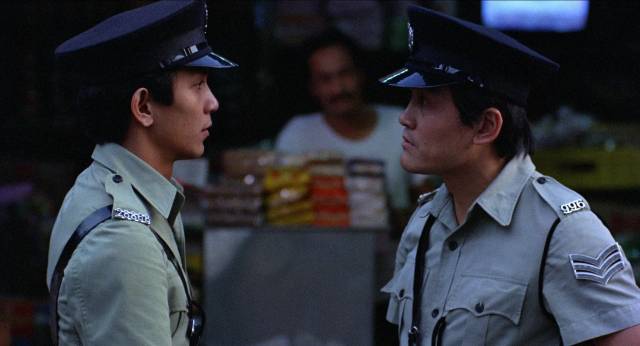
Man on the Brink (Alex Cheung, 1981)
Alex Cheung’s Man on the Brink (1981) offers a fairly familiar story executed with more gritty realism than we expect from Hong Kong action movies. A young cop (Eddie Chan) is sent undercover by his commander and has to abandon his life to become a triad member immersed ever more deeply in crime and violence. More character study than bullet ballet, it approaches the story with an almost documentary style rather than the operatic flamboyance of later films by John Woo, Ringo Lam and others. (Kani Blu-ray with commentary, Q&A and brief making-of clips)
*

Scrapbook (Eric Stanze, 2000)
Like a few other regional independent filmmakers, Eric Stanze started his own production company in Missouri (Wicked Pixel) through which he produced his movies as well as others by various collaborators, while also supporting himself as a crew member in multiple capacities on other people’s movies – as editor, second unit director, cameraman, grip. As a writer, producer and director, he’s focused on horror – both psychological and supernatural – with his fourth feature, Scrapbook (2000), being one of his most extreme. A brutal chamber piece about a serial killer who lives in a remote farmhouse where he kidnaps, rapes and murders women in a protracted, ritualistic way, acting out a violence rooted in childhood abuse and forcing his victims to become complicit in their own degradation and destruction. His latest victim endures excruciating treatment as she desperately figures out how to manipulate him and gradually gain the upper hand. The nastiness is hard to watch, but the film is lifted out of the pit of gratuitous torture porn by the remarkably committed performances of writer Tommy Biondo as the killer and Emily Haack as the victim who refuses to let him crush her. (Saturn’s Core Blu-ray with new and archival commentary tracks and new and archival making-ofs)
*
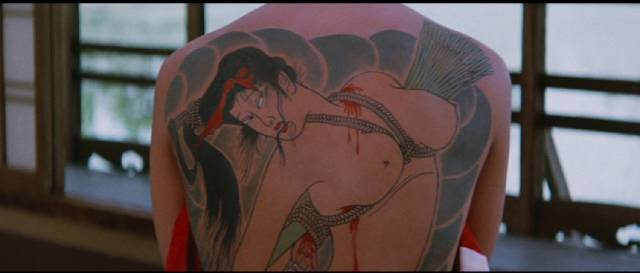
Shogun’s Joy of Torture (Teruo Ishii, 1968)
In contrast to Stanze’s grimy realism, Teruo Ishii’s Shogun’s Joy of Torture (1968) has all the colour and elegance which the resources of Toei studios could provide. This was the first of Ishii’s period films which combined sex and violence in disturbing ways while offering an explicit critique of historical epics centred on the samurai and their code of honour. Here, as in Inferno of Torture and Orgies of Edo (both 1969), Ishii focuses on the abuses which that system inflicted on women, the visually polished display of female bodies offering the audience titillation uncomfortably mixed with an awareness of cruelty and injustice. Ishii’s films evoke a more complicated response than many of the more explicit movies released in the following decade where the cruelty was itself intended to titillate an audience which enjoyed the misogynistic spectacle on its own terms. To a degree, Ishii’s films contain empathy for their female victims and critique the patriarchal horrors of historical Japan. (Arrow Blu-ray with commentary and a pair of interviews covering Ishii, the erotic grotesque and the use of torture imagery in Japanese exploitation cinema)
*

Mom ‘n’ Pop: The Indie Video Store Boom of the 80s/90s (Bobby Canipe Jr., 2022)
As the glow has worn off the glorious possibilities of streaming, there’s been an upsurge in nostalgia for the glory days of home video. Back in the late ’70s and up to the turn of the century, people had found themselves in greater control of their entertainment than ever before, no longer tied to broadcast television schedules flooded with ever increasing numbers of commercials or the schedules of movie studios and theatre chains. With the invention of VCRs and videotape cassettes, it was possible to walk down to the corner store and find something to rent for the evening, as often as not something you’d never see on television. The rapid expansion of home video opened up new vistas of film culture for those who wanted to explore beyond the commercial mainstream – but it also brought that mainstream into the home. Streaming initially seemed to offer something similar, but without being tied to physical media. Yet in time drawbacks have become apparent. With the proliferation of streaming services, multiple subscriptions are necessary if you want to have access to a broad range of material, increasing the cost; but even worse, movies can suddenly disappear without warning, so something you’d been planning to watch might no longer be available; convenience is compromised by the vagaries of corporate decision-making.
So it’s not surprising that a number of documentaries have appeared which are devoted to that original sense of possibility and freedom. Perhaps equally unsurprising is that these movies have grown out of the fan’s passion, their makers having been immersed in the culture of movie rentals, often since childhood, now lamenting the loss of a cherished experience. There was Dan Kinem and Levi Peretic’s Adjust Your Tracking: The Untold Story of the VHS Collector (2014), James Westby’s At the Video Store (2019), Brantley Palmer’s Everything to Entertain You: The Story of Video Headquarters (2023) and now Bobby Canipe Jr.’s Mom ‘n’ Pop: The Indie Video Store Boom of the 80s/90s (2022). This is the most ragged of the bunch, with a thrown-together feel, though the amateurishness does reflect the impromptu culture it depicts; for the most part Canipe has interviewed fans like himself, the most recognizable names among the people on camera being Troma’s Lloyd Kaufman and prolific direct-to-video hack Tim Ritter, which gives an idea of which corner of the cinematic universe Canipe is most interested in. (Saturn’s Core Blu-ray with director commentary and some additional, extended interviews)
*

The Rock-Afire Explosion (Brett Whitcomb, 2008)
A different kind of nostalgia inspires Brett Whitcomb’s The Rock-Afire Explosion (2008), another documentary made with an insider’s enthusiasm – though in this case on a subject with which I have no personal experience. I was only vaguely aware of the animatronic characters in Chuck E. Cheese pizza restaurants (which had inspired the plot of the dire Nicolas Cage movie Willy’s Wonderland [2021]), and certainly didn’t know until I watched Whitcomb’s film that those corporate icons were ripped off from another pizza chain called Showbiz Pizza. As the Cage movie suggests, life-size animatronic characters are as uncanny as clowns – weird simulacra which call into question what is human. And yet for kids who grew up in the ’80s, the animatronic band the Rock-Afire Explosion became an important part of their experience and many have maintained a deep attachment which, for some, extends to buying a set of the characters to set up on their own property.

Whitcomb weaves together a number of strands, all framed by the reminiscences of these now-adult fans. A key figure is engineer Aaron Fechter, who created the characters through his Creative Engineering Inc (which he had originally formed to develop a new fuel-efficient automobile). Not only did Fechter build the animatronic characters; he also provided the vocals. This work was entwined with the vicissitudes of the restaurant business and the film sketches in the complications arising from rival chains, bankruptcies and take-overs which eventually led to the merger of Showbiz with the similar Pizza Time Theatre, the new company rebranded as Chuck E. Cheese in 1990. It was during these upheavals that the company decided to reverse engineer CEI’s animatronics, leading to a falling out between the chain and Fechter and the creation of an imitation band headed by Chuck E. Cheese himself.
The film does an excellent job of illuminating the ways in which the profit-making activities of corporations insinuate themselves into the personal experience of consumers and how those consumers take emotional possession of the products sold to them. As an obsessive collector myself I can identify with this process, but I can’t help but be aware of an underlying melancholy arising from this colonization of imagination which so often takes root in childhood and is carried on through the rest of our lives. (AGFA Blu-ray with commentary, outtakes and vintage promo and media clips)
*

The United States of Insanity (Tom Putnam & Brenna Sanchez, 2021)
This appropriation of pop culture elements as part of personal identity also runs through Tom Putnam and Brenna Sanchez’s The United States of Insanity (2021), but it takes on darker implications. I should mention that I know very little about Insane Clown Posse and until watching this documentary only had a vague impression that they’re a kind of bad music joke with a passionate fan following. I’m certainly in no position to offer an opinion of their music, but the film illuminates something interesting about the ways in which fans identify with their idols and reshape their own identities around the material that appeals to them. Even more interesting is the way in which society responds to that shared identity, which is the subject of the documentary.
The duo, Violent J (Joseph Bruce) and Shaggy 2 Dope (Joseph Utsler), came from impoverished backgrounds in Detroit, sharing a passion for wrestling and rap. Frustrated with the wrestling business, they focussed on the music, eventually creating their alteregos with elaborate clown makeups and lyrics steeped in horror imagery. Despite not being taken seriously by critics, they gained commercial success with fans dubbed the Juggalos emulating their look with clown makeups of their own. Ridiculed along with ICP, the Juggalos became something of a cult who have flocked to the Gathering of the Juggalos, an annual music festival, every year since 2000.

All of which would be fairly unremarkable if it wasn’t for the fact that in 2011, in an annual report, the FBI designated the Juggalos as a criminal gang. While some gangs had appropriated the Juggalo identity, the majority of fans were basically regular people, some of whom involved themselves in charity work and community outreach programs. But the FBI designation soon began to cause problems, with people even losing their jobs or the custody of their kids because they suddenly found themselves publicly outed as “criminals”. The absurdity of this is glaringly obvious – if someone wearing a Darth Vader helmet robbed a gas station, would all Star Wars fans be labelled a criminal gang? There are numerous pop sub-cultures who find an emotional connection with others who share their passion for particular cultural products, but the idea of imposing an official designation on them and then treating them as a group under an actual legal classification is deeply unsettling.
Which is why the ACLU stepped in and began a long, complicated legal process to remove that FBI label. While the legal basis for the case is the First Amendment, its implications are broader – this leans into Big Brother territory and the idea that the state has the authority to police “thought crime”. They don’t like your taste in music? Then they can constrain your civil liberties… This echoes the case of the West Memphis Three, whose taste for heavy metal got them sent to prison for a murder they didn’t commit. But in the case of the Juggalos it encompasses the lives of some seven million fans who, in the eyes of the police, became instant criminals with the stroke of an FBI pen.

The film provides a history of the band (now middle-aged, Bruce and Utsler come across as self-aware, with an engaging sense of humour) and their fan community as it follows the legal case over seven years. Despite the obvious absurdity of the FBI designation, the film can’t provide a satisfactory conclusion to the story because the slow-moving legal system repeatedly dismissed the case with weaselly rulings which refused to acknowledge the obvious damage done to individuals who have never actually committed a crime, suggesting a deeply embedded state interest in controlling behaviours (and thoughts) which don’t conform to a particular range of acceptable standards. (ETR Media Blu-ray with deleted and extended scenes and ICP concert footage)
*
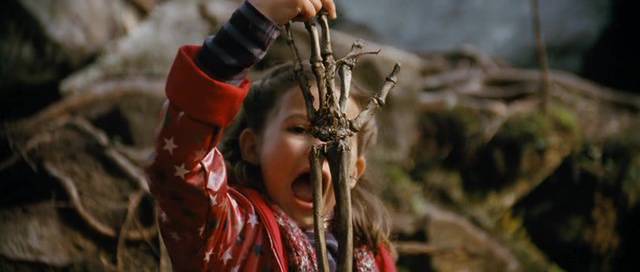
Sennentuntschi (Michael Steiner, 2010)
Michael Steiner’s Sennentuntschi (2010), promoted as the first Swiss horror film, is ambitious, visually striking, and ultimately rather frustrating. There are hints of the supernatural, giving the stunning Alpine landscapes an aura which is simultaneously beautiful and sinister, and the film has an air of folk horror which is only partially dispelled with a grimly realistic resolution to its mystery. That mystery begins when a young child on a family picnic in the mountains is lured by a silent boy to a small grove where a skeletal hand pokes out of the ground. This discovery, and the tentative identification of the body (which seems to be the remains of the boy who attracted the child’s attention), prompts a flashback to the ’70s for the main narrative.
This story begins with the apparent suicide of a young priest who’s found hanging from the church bell rope. At the same time, a mute young woman wanders into the village, her strange behaviour leading the superstitious villagers to believe she’s a witch who had something to do with the priest’s death. The local policeman protects her while trying to uncover her identity. Meanwhile, up on the mountain, a herder and his son are joined by a man from the city who is hiding a secret of his own. During a drunken evening, these three perform an old ritual in which they create a figure from a broom and straw – a sennentuntschi – which is given human life by the devil as a woman to serve them as a sexual slave. This figure is the same mysterious woman who appeared in the village…
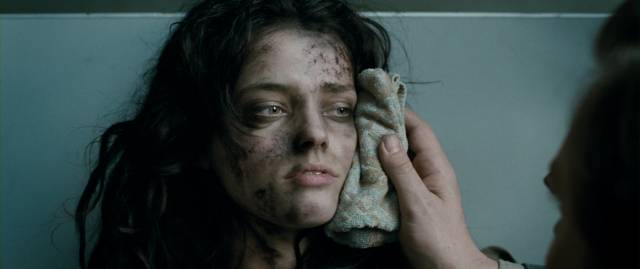
And therein lies the chief source of frustration – it isn’t clear until late in the film that this flashback narrative is running in two parallel timelines, slightly displaced from one another; until this becomes clear, trying to figure out how the elements connect and how characters can seemingly be in two places at once is distracting. Things only make sense in retrospect once the policeman finally solves the woman’s mystery – a horrific story of physical and sexual abuse committed by someone with supposedly unimpeachable authority, which is reinforced by the revelation of the city man’s own history of violence towards his wife. The story itself is a grim dissection of misogyny embedded in a traditionally patriarchal society dominated by the Church, and its individual parts are impressive, but the way it’s told is deliberately confusing, which apparently is intended to deepen the mystery but rather works against viewer engagement. (Constantin Film Blu-ray with a brief making-of and an interactive gallery of location shots)
Comments
There are things we do purely for enjoyment i think that’s probably true no matter what kind of life we live I’ve always envied the few who actually manage to step outside their obsessions to share their thoughts about their particular addiction, whether it be books, comics, movies, UFO or cars. Those are the people I read and watch. I don’t think you should fret about continuing to do something you enjoy, or about sharing your thoughts about it. On the other hand, if writing the blog has become too much of a chore, maybe its time to rethink how you approach it.
By my standards you’ve had a very interesting life Kenneth. You pursued your dream and have worked in various capacities within the filmworld. I very much liked your documentary Remembering Winnipeg Movie Theatres. Like you, I am a big collector and I have thousands of movies in various formats.
Your movie reviews and essays about the film industry are among the best I’ve ever read. I can safely say you will be missed if you pack in this website. However, you must do what is best for you. If you do stop posting new reviews, I hope the website can be preserved as a “library.” I often check out reviews you made long ago, and I would imagine others do so too.
My rant was a bit overwrought and melodramatic; I was feeling frustrated by the website technical issues coming on top of some annoying stuff at work … but I imagine I’ll continue writing these posts because they’ve become such a consistent creative outlet for me.